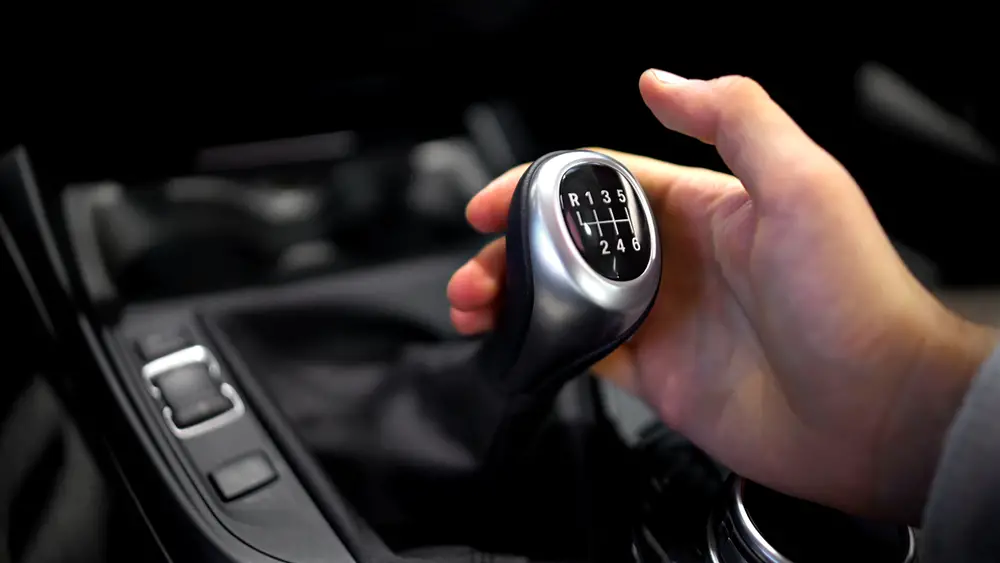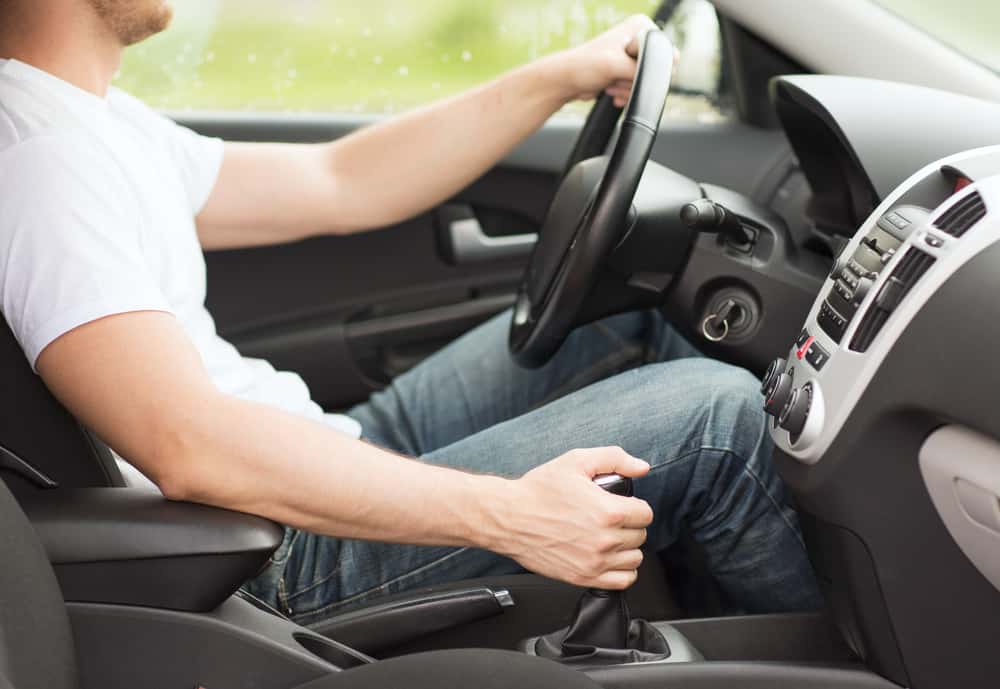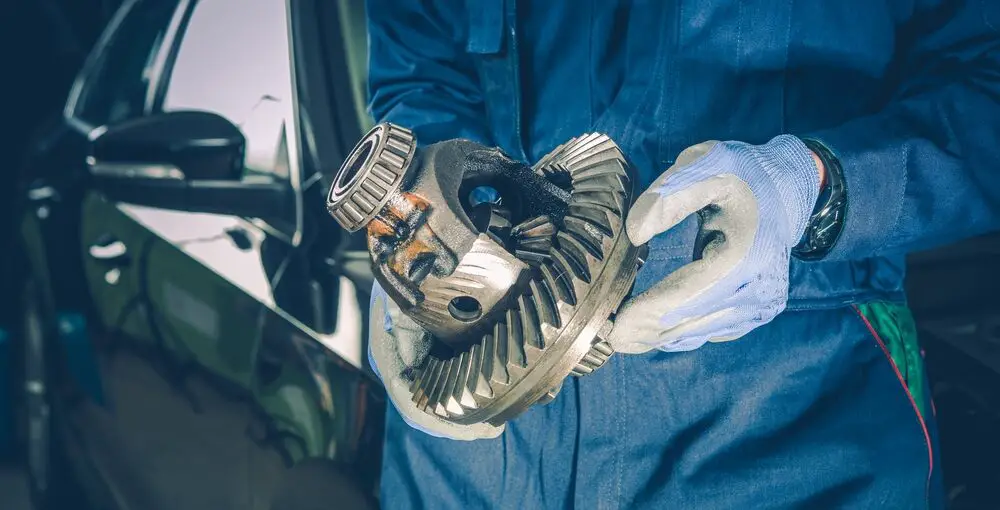
Whether your car is manual or automatic, it has a gearbox between the engine and the rest of the drive chain. It is such a standard feature of automobiles that we tend to take it for granted.
However, you may find yourself wondering about its presence and function. Why is it that cars have gears?
Cars have gears for two primary purposes; the gearbox transforms the crankshaft’s rotational speed and torque into what is required at the wheels in a particular situation, such as taking off or cruising. The differential allows the wheels to rotate at different speeds so the car can turn.
It is easy to grasp the basic principles of gears, namely that they serve to convert high rotational speed to low rotational speed with more torque or vice versa.
But it can be challenging to understand the ins and outs of gear ratios, how they relate to what we call “high” or “low” gears, and how to get the best out of gears.
To Change Speed/Torque & Allow Turning

You drive at various speeds when you drive a car, from taking off from a standstill to cruising at 70 miles per hour on the highway and everything in between.
To enable this, your car’s transmission converts the chemical energy of the fuel burnt in the engine into mechanical energy driving the up-and-down motion of the pistons.
The crankshaft translates this up-and-down motion into rotary motion, which drives the transmission, and, ultimately, the wheels, resulting in your car moving.
Crankshafts rotate at various speeds, which we specify in revolutions per minute (RPM). Low crankshaft speeds are under 400 RPM; medium speeds are between 400 and 1000 RPM, and high speeds are above 1000 RPM.
How fast your crankshaft rotates depends on how much fuel you send to the engine by pressing the accelerator.
However, you may not want your car’s wheels to rotate at these speeds. A typical wheel with a tire is approximately two feet in diameter, resulting in 840 revolutions per mile.
This figure translates to 840 revolutions of your wheel per minute at 60 miles per hour, 1120 RPM at 80 MPH, and 1400 RPM at 100 MPH.
As you can imagine, there can often be a mismatch between the speed at which the crankshaft is rotating and the speed you require at the wheels.
The gears in your gearbox (which may either operate automatically or be under your control in a car with manual transmission) allow you to change the rotational speed of the crankshaft to the speed needed at the wheels via the drive train.
In changing the rotation speed, gears also increase or decrease torque, which is the instantaneous rotational force in a moving object (also sometimes referred to as the engine’s power output).
Greater torque helps vehicles overcome the initial resistance they encounter at low speeds and accelerate faster, whereas, at higher speeds, lower torque is desirable, allowing you to go more quickly.
Internal combustion engines deliver their optimum power output for a particular speed in a relatively narrow band of RPMs (around 1500 to 2000 RPM), necessitating the use of gearboxes to transform their output into what you need at the wheels.
The Role Of The Differential

Your car also has gears in the differential, which you will find on the axles or half-axles of vehicles. The location and number of differentials in your vehicle depend on whether your car is two-wheel drive or four-wheel drive and whether it has full axles or half-axles.
A differential is a gear train (series of connected gear wheels) with three drive shafts. The arrangement of these gears relative to each other means the rotational speed of any shaft is the average rate at which the others rotate.
This property means that the differential gears on one side of the vehicle can turn at a different speed from the gears on the other side. As a result, the car’s wheels can rotate at different rates (for example, the left wheel may make ten rotations while the right wheel makes six).
As a result, the left side of the car moves forward more than the right, resulting in the vehicle turning to the right. Without differentials, your car would not be able to turn to the left or the right and would be doomed to travel only in a straight line.
How Do The Gears In A Car Work?
Gears are wheels with several teeth, notches, or cogs around their rims and a shaft through the middle. These wheels turn together, and a gear train can consist of anything from two gears to 18 in trucks.
The following principles apply to gears:
- Any gear train contains an input gear (the driver gear or simply the driver) and an output gear (the driven gear or follower).
- The driver and the driven gears always turn in opposite directions. If the driver gear turns clockwise, the driven gear turns counterclockwise, and vice versa.
- The gear wheels are different sizes, resulting in a ratio between the driver and the follower. As a result, they make a different number of revolutions in a given time.
- If a large driver drives a smaller follower, the follower will make more rotations in a given time than the driver, resulting in higher speed. However, the output torque is lower. This output is desirable when driving at higher speeds.
- This arrangement is known as a low ratio, but confusingly, in common usage, we refer to it as a higher gear.
- If a small driver drives a larger follower, the follower will make fewer rotations in a given time than the driver, resulting in lower speed but higher torque. This situation is preferable for driving at lower speeds.
- This arrangement is known as a high ratio; however, in common parlance, we refer to it as a lower gear. The lowest gear (highest ratio) is the first gear, which provides the large amounts of torque required to overcome your vehicle’s initial resistance (inertia).
How Do Automatic Transmissions Work?

Automatic transmissions generally incorporate the transmission, differential, and axle into a single unit, known as a transaxle. In contrast to manual transmissions, they do not require the driver to select the appropriate gear ratio for a particular speed.
Instead, they use epicyclic gearing systems (or planetary gearsets) to transition smoothly between different gearing ratios as the engine’s speed changes.
In such scenarios, a carrier connects two gears through their centers, allowing the center of one gear to revolve around the center of the other.
The sun gear stays fixed, and the planetary gear (or gears) revolve around it. A planetary gear train may also include a ring gear that encompasses the entire assembly.
As the input speed changes, the radius of rotation of the various gear wheels changes smoothly to provide the required output without the driver needing to intervene.
Why Do Electric Cars Not Have Gearboxes?
Although cars with internal combustion engines have gearboxes, electric vehicles do not.
Electric motors output maximum torque at zero RPM, operate through a far greater range of RPMs than gas or diesel engines (up to as much as 20 000 RPM), and deliver their optimal power output across an extensive band of RPMs.
As a result, it is unnecessary to use a gearbox full of gear ratios to accommodate the engine’s power output at a particular speed. Instead, electric car designers select a single gear ratio that compromises between acceleration and top speed, thus removing the need for a gearbox.
Conclusion
Cars have gears to transform the rotational speed and power of the crankshaft into what you require at the wheels in a given situation, whether taking off, accelerating or cruising at speed.
The gears in the differential allow the wheels on opposite sides of the car to rotate at different rates, allowing the vehicle to turn.
